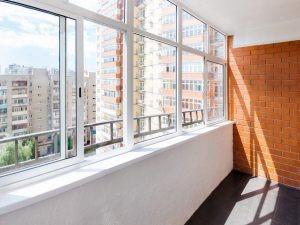
Removal of veranda for facade works: who is up to it?
Removal of veranda for facade works: who is up to it?
Expenses necessary to dismantle the veranda to allow the renovation or restoration of the facade: who pays?
Mariano Acquaviva – Court of Salerno 21/10/2020
According to art. 1117 of the Civil Code, the facade of the condominium is part of the common parts of the building. This means that the maintenance, renovation and / or restoration works must be borne by all the condominiums, in proportion to the value of the exclusive property owned by each.
When it comes to carrying out work on the external wall of the condominium, however, a problem could arise: that of removing the verandas to allow operations.
Who is responsible for this type of work? Who has to bear the expense when the verandas have to be dismantled to allow condominium works?
In this regard, the solutions that can be abstractly envisaged are two: the costs of removing the verandas and any other external element that could hinder the work must be borne by the individual condominiums, each with reference to his property; the burden falls on the contractor, with the consequence that this type of intervention must also be divided among all the condominiums according to the thousandths owned.
What is the exact solution? Who is responsible for removing the verandas to redo the facade?
The facade of the condominium
It has been said that, pursuant to art. 1117 c.c., the facade of the condominium falls within the common parts of the building, unless the title provides otherwise.
By facades we mean the external appearance of the building, which, in fact, constitutes the architectural decoration of the building.
Removing verandas: who is up to it?
Being a common good, the works concerning the condominium facade must be supported by all the condominiums according to the ownership shares expressed in thousandths.
The problem is that, when interventions involving the façade are commissioned, there may be elements that can create a hindrance to the correct execution of the works. This is the case with verandas.
The veranda is that external element resulting from the closure of the balcony or terrace of a home, integrating the transformation of the compartment into a living area with the creation of greater volume and a new autonomously usable room.
This is an urban transformation intervention, therefore it must be preceded by the release of the building permit, as it cannot be configured either as pertinence, or as an extraordinary maintenance or restoration intervention.
Who is responsible for removing the verandas to allow work on the condominium facade? To the contractor of the works, which obviously charges the cost of the work to all the condominiums, or to the individual owner of the accommodation that the veranda accesses?
The latter is the right solution: although the veranda, being an external element, can be included in the concept of an element affecting the architectural decoration of the building, it is still the property of the individual condominium.
Therefore, although its construction may be opposed by the assembly for violation of the architectural decor, the veranda remains an open accessory part of the real estate unit, a real additional compartment of the same, and therefore the costs inherent in its removal (and subsequent, eventual, installation) burden on the individual owner, not on all condominiums.
Responsibility of the condominium that does not want to remove the veranda
If the condominium decides for the renovation of the facade or for any other maintenance or renovation, each owner is required to collaborate by removing, if necessary and if required by the nature of the intervention, their own veranda.
The cost of the renovation of the facade must be divided among all the condominiums, while the cost of removing the veranda is borne only by the owner of the same. What happens if the individual condominium refuses to cooperate, opposing the removal of the veranda at his own expense?
In such an event, the condominium would be entitled to take legal action to obtain the removal of the veranda at the expense of the individual owner and, obviously, also the compensation for damages, which can be quantified by proving, for example, the delay in the execution of the works caused by the opposition of the condominium, or by the loss of any deposit paid to the contractor which, faced with the impossibility of renovating the facade, terminated the contract.
In practice, if a condominium refuses to have the existing veranda disassembled to have the necessary restoration or renovation works carried out, he will have to personally assume responsibility for the condominium and any damaged third parties.
The restoration of the front panels of the balconies and the veranda
What has been said is especially true if the presence of the veranda makes it impossible to carry out works that concern the safety of the condominium facade, i.e. works necessary to avoid damage to people and things in the future. This is the case of the restoration of the balcony fronts.
According to part of the Court of Cassation (ordinance n.27413 / 2018), the costs for the maintenance of the front panels of the balconies are to be divided according to specific thousandth tables since it is a condominium intervention concerning the architectural decoration of the building.
The restoration of the balcony fronts generally requires an intervention for which the old floor and the perimeter battens must be removed. The presence of the veranda would not allow the intervention to be carried out in a workmanlike manner.
Also in this circumstance, the costs for disassembling the veranda are borne by the individual condominium who, if he refuses, will have to personally assume responsibility towards the condominium and any damaged third parties.
Source: https://www.condominioweb.com/spese-necessarie-a-smattere-la-veranda-chi-paga.17480
GECOSEI of Giuseppina Napolitano

